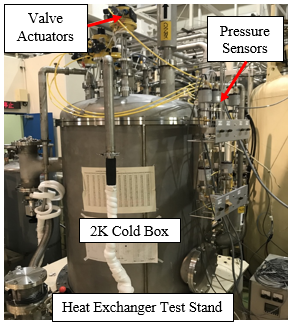March 05, 2020
Study on 2K heat exchanger of superfluid helium cryogenic systems at KEK
SOKENDAI Student Dispatch Program program year: 2019
Ashish Kumar, Accelerator Science
Summary
The niobium superconducting radio frequency (SRF) cavities accelerate electron beams to near light speed in accelerator test facilities at KEK. The SRF cavities operate at temperatures of 2.0 K (-271.15 °C) or below, cooled with superfluid helium (temperature < 2.17 K or -270.98 °C). A superfluid helium cryogenic system with a 2K heat exchanger is employed to produce superfluid helium from normal liquid helium (4.21 K or -268.94 °C). The more efficient the heat exchanger is, the higher the production rate of superfluid helium. The purpose of this research is to maximize the production of superfluid helium by designing the heat exchanger as efficient as possible. For this purpose, we first tried to know the current efficiency. With extensive experimentation on the heat exchanger test stand, the efficiency of the current heat exchanger was determined to be 74% (requirement is > 83%), which gave the production rate of superfluid helium to be 86% (our goal is 90%).

A heat exchanger test stand which houses storage tanks for fluids, a 2K heat exchanger, valves and sensors. It measures the performance of the 2K heat exchanger by simulating identical operational conditions as in the cryogenic systems for superconducting radio frequency cavities at KEK.
A heat exchanger test stand which houses storage tanks for fluids, a 2K heat exchanger, valves and sensors. It measures the performance of the 2K heat exchanger by simulating identical operational conditions as in the cryogenic systems for superconducting radio frequency cavities at KEK.
The obtained results were presented and discussed in a poster presentation session at the cryogenic engineering conference - international cryogenic materials conference (CEC-ICMC in July, 2019) at Hartford, USA, and a conference paper was also submitted for peer review. Interesting ideas were discussed with the researchers at the conference to improve the performance of the heat exchanger, and hence the cryogenic systems. In the future, the 2K heat exchanger design will be optimized to perform according to the requirement, which can become a viable option for cryogenic systems for SRF cavities based accelerators.
Department of Accelerator Science, ASHISH KUMAR
